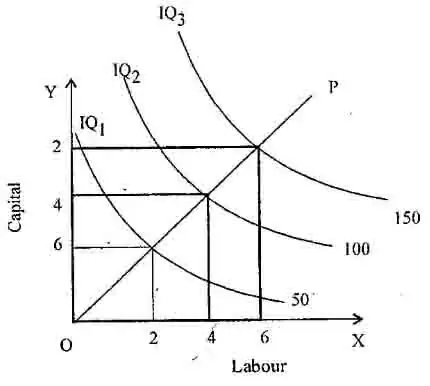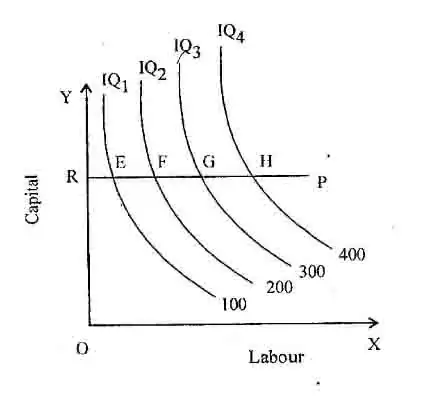Distinguish between returns to a factor and returns to scale. Use isoquants to explain constant returns to scale and diminishing returns to a factor can they exist together?
Returns to a factor studies the behavior of output when more and more units of the variable factor is combined with the fixed factor. Here, scale of production remains constant but factor ratio changes. Whereas the returns to scale studies the behavior of output when the scale of output changes. Here scale changes but the factor ratio remains constant.
Returns to a factor is a short -run concept. It has three situations namely;
- Increasing Returns to a factor : Total output tends to increase at a increasing rate when more of the variable factor is combined with the fixed factors of production.
- Constant Returns to a factor : It’s a situation when increasing application of the variable factor no more results in increasing marginal product of the factor, rather marginal product of the factors tends to stabilize.
- Diminishing Returns to a factor : Total output tends to increase at the diminishing rate when more of the variable factor is combined with the fixed factors of production. Marginal product of the variable factor must be
Returns to scale is a long run concept as in the long run all factors of production are variable. The response of output to changes in the scale or size of all factors in the same proportion is termed as returns to scale. It has three situations i.e.,
- Increasing Returns to scale: It occurs when a given percentage increase in all factor inputs causes proportionately greater increase in output.
- Constant Returns to Scale : It occurs when a gives percentage increase in all factor inputs causes equal percentage increase in output.
- Diminishing Returns to Scale : It occurs when a given percentage increase in all factor inputs (in some constant ratio) cause proportionately lesser increase in output.
The main cause of the application of Returns to a factor is the variation or the change in the proportion of different factors. Whereas, Returns to scale are caused by change in the scale of production.
Constant Returns to Scale : It refers to a situation in which expansion in output happens to be just proportionate to the expansion in factor inputs. Constant returns to scale means that the size of inputs and the size of the output increases in the same proportion. Doubling the input, doubles the output.

Diminishing Returns to a factor : It is a situation when increasing application of the variable factor increases total output only at the
diminishing rate. When capital is held constant at OR and production is expanded by adding more labour, the distance between successive isoquants become increasingly greater, that is, more and more labour is required for every 100 additional units of output. This means a diminishing Marginal product of labour. The distance EF is less than FG and FG is less than GH.

It means that 100 units increase in output can be obtained by using successively greater increments of labor. Between E & F additional
10 units of labor. Between F to G additional 100 units of output is obtained by applying 20 units of additional labor. Thus, the marginal product of labor diminishes when output is expanded along the output path RP.




